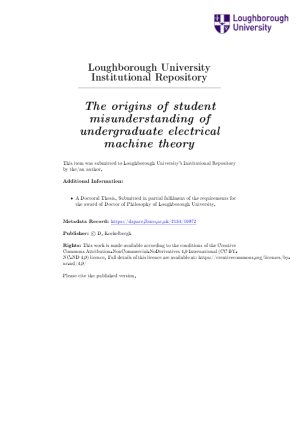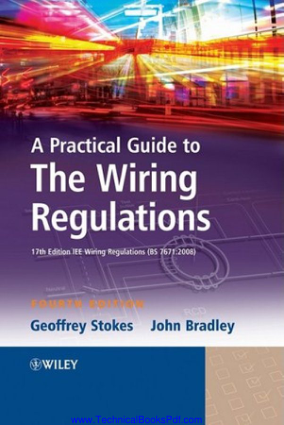Contents
Preface xi
Acknowledgements xv
1 Troubleshooting for Fun and Profi t 1
1.1 Why Troubleshoot? 10
1.2 Traits of a Successful Troubleshooter 13
2 An Insight in Design: Machines and
Th eir Components Serve a Function 19
2.1 An Overview of the Design Process 30
2.2 Complex Machine Element Environments 34
3 Machinery Design Issues and Failure Modes 37
3.1 Common Failure Modes 44
3.1.1 Pluggage 45
3.1.2 Erosive Wear 45
3.1.3 Fatigue 46
3.1.4 Compressor Blade Fatigue Example 47
3.1.5 Bearing Failure 49
3.1.6 Rubbing 50
3.1.7 Unique Failure Modes 50
4 Machinery in Process Services – Th e Big Picture 53
5 Causes Versus Symptoms 61
5.1 Causal Chains 66
5.2 Summary 71
6 Approach Field Troubleshooting Like a
Reputable News Reporter 73
viii Contents
7 Th e “What” Questions 77
7.1 What is the Problem or What Are the Symptoms? 78
7.2 What Is Your Assessment of the Problem? 80
7.3 What Is at Stake? 85
7.4 What Risk Is at Hand? 86
7.5 What Additional Information Is Required? 87
8 Who Knows the Most About the Problem? 91
9 When Do the Symptoms Show Up? 97
9.1 “When” Questions to Ask 100
9.2 Ways to Display Time Related Data 101
9.3 Timelines 102
9.4 Trend Plots 106
9.5 Constant Amplitude Trends 110
9.6 Step Changes 110
9.7 Gradual Versus Rapidly Changing Trends 111
9.8 Correlations 113
9.9 Speed-Related Issues 114
9.10 Erratic Amplitude 117
10 Where Do the Symptoms Show Up? 121
10.1 Locating a Machine-Train Problem 122
10.2 Troubleshooting Problems Involving
Multiple Machine-Trains 128
10.3 Multiple Versus Single Machine Train Examples 130
10.4 Analyzing Noises, Pings, and Knocks 132
10.5 Seeing the Light at the End of the Tunnel 135
11 Why Is the Problem Occurring? 137
11.1 Fitting the Pieces Together 139
11.2 Reciprocating Compressor Example 142
11.3 Troubleshooting Matrices 143
11.4 Assessing Machine with Multiple Symptoms 144
12 Analyze, Test, Act, and Confi rm (Repeat as Needed) 147
12.1 Th e Iterative Path to the Final Solution 150
Contents ix
13 Real-World Examples 155
13.1 Case Study #1 155
13.1.1 Closing Comments 158
13.2 Case Study #2 158
13.2.1 Closing Comments 163
13.3 Case Study #3 163
13.3.1 Closing Comments 170
13.4 Case Study #4 170
13.5 Case Study #5 174
13.5.1 Closing Comments 179
14 Th e “Hourglass” Approach to Troubleshooting 181
14.1 Th inking and Acting Globally 186
15 Vibration Analysis 187
15.1 Vibration Analysis Primer 188
15.2 Identifying Machine Vibration Characteristics 201
16 Applying the 5Qs to Rotordynamic Investigations 207
16.1 Introduction 208
16.1.1 Rotordynamics: A Brief Overview 208
16.2 Using Rotordynamic Results for Troubleshooting 213
16.3 Closing 222
17 Managing Critical Machinery Vibration Data 227
17.1 Vibration Analysis Strategies 230
18 Closing Remarks 235
18.1 Practice the Method 235
18.2 Provide Training on Fault Trees and Cause Mapping 236
18.3 Employ Team Approach for Complex Problems 236
18.4 Get Management’s Support 237
Appendix A: Th e Field Troubleshooting Process—Step by Step 239
Appendix B: Troubleshooting Matrices and Tables 249
Index 351
Preface
Troubleshooting is part science and part
art. Simple troubleshooting tables or decision
trees are rarely eff ective in solving
complex, real-world machine problems.
For this reason, the authors wanted to off er
a novel way to attack machinery issues that
can adversely aff ect the reliability and effi –
ciency of your plant processes. Th e methodology
presented in this book is not a rigid
“cookbook” approach but rather a fl exible
and dynamic process aimed at exploring
process plant machines holistically in order
to understand and narrow down the true
xii Preface
nature of the problem. Th roughout this
book, the term process machinery will be
used to refer to rotating machinery commonly
encountered in processing plants,
such as centrifugal pumps and compressors,
reciprocating pumps and compressors,
fans, steam turbines, and electric motors.
Our fi rst book in this series, Is My Machine
OK? deals, in large part, with assessing process
machinery in the fi eld. Th is guide takes the
assessment process to the next level by helping
operators, mechanics, managers, and machinery
professionals better troubleshoot process
machinery in-situ, i.e., in the fi eld. To cover the
topic of troubleshooting, the authors will cover
the following topics in this book:
• What fi eld troubleshooting means and
entails
• How to use this guide as a complement
to Is My Machine OK?
• Using the “who, what, when, where,
why” troubleshooting methodology
• How to use cause maps to investigate
possible causes
• Real-world case studies
• How to use machine-specifi c troubleshooting
tables
To be successful, the troubleshooter must be persistent,
open-minded and disciplined. Once fi eld
data is collected, an unbiased, logical approach
to the fi nding is required to hone in on the most
probable source of an observed symptom (or
symptoms). Without a comprehensive and logical
analysis of the fi ndings, the investigator is
only guessing, which wastes valuable time and
resources. We hope those reading and using this
guide will fully utilize the ideas and concepts presented
to minimize maintenance cost and risk
levels associated with machinery ownership.






